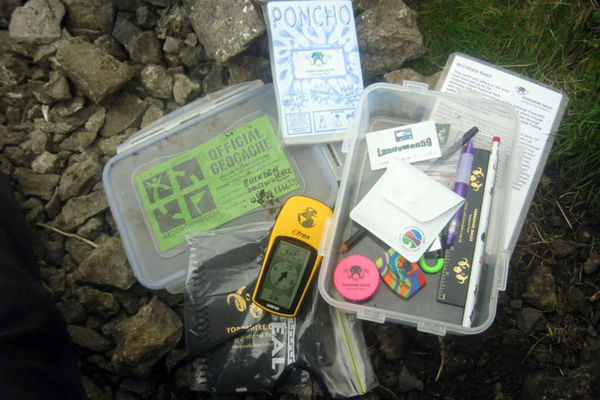Go geocaching
Go on a supervised geocaching hunt using a GPS or smartphone to find hidden caches, log your finds, and safely trade small trinkets.



Step-by-step guide to go geocaching
Beginners Guide to GEOCACHING - The Basics (GCNW)
Step 1
Put on comfortable shoes and weather-appropriate clothes.
Step 2
Pack a water bottle small trinkets notebook and pen into your bag.
Step 3
Ask an adult to join you on the geocaching hunt.
Step 4
Agree on a safe route and safety rules with the adult.
Step 5
Open the geocaching app on your GPS or smartphone.
Step 6
Choose an easy nearby cache from the app list.
Step 7
Walk to the cache location while following the GPS and staying with your adult.
Step 8
Search the immediate area carefully for the hidden cache.
Step 9
Open the cache gently.
Step 10
Sign the paper logbook with your name and the date.
Step 11
Log your find in the geocaching app with a short note.
Step 12
Trade one trinket by taking one from the cache and leaving one from your bag.
Step 13
Close the cache and hide it exactly where you found it.
Step 14
Write a short note about the find in your notebook.
Step 15
Share your finished creation on DIY.org
Final steps
You're almost there! Complete all the steps, bring your creation to life, post it, and conquer the challenge!


Help!?
What can we use if we don't have small trinkets, a notebook and pen, or a smartphone/GPS for the geocaching trip?
Substitute small trinkets with stickers, coins, or folded paper notes, use your phone's Notes app or index cards and a pencil to write your short note, and follow printed coordinates with a paper map or compass instead of the geocaching app.
What should we do if we reach the GPS location but can't find or open the cache?
Double-check the geocaching app coordinates and hint, search the immediate area methodically (look under leaves, inside tubes, and up in branches), have your adult help lift or move objects gently, and if the logbook is missing or the cache is damaged log the condition in the app and note it in your notebook.
How can we adapt this geocaching activity for younger children or older kids?
For younger children choose an easy nearby cache from the app list, shorten the route, keep the adult close to lead the GPS and help search while simplifying the trade, and for older kids pick a harder cache, let them navigate the app, swap or craft more complex trinkets, and write a longer notebook entry before sharing on DIY.org.
How can we extend or personalize the geocaching hunt after we find and sign the logbook?
Make and bring handmade trinkets to leave, decorate a special page in your notebook with sketches and stickers about the find, take photos of the cache and route to create a mini-map or story, and share your finished creation on DIY.org.
Watch videos on how to go geocaching
How to Make a Geocache! (2024)
Facts about GPS navigation and outdoor treasure hunts for kids
🔎 Caches vary wildly in size and style — from tiny 'micro' containers to large boxes and multi-stage puzzles that form treasure-hunt adventures.
🧭 Geocaches are hidden on every continent, including Antarctica — people have found caches in deserts, cities, forests, and polar regions.
🎁 Geocaching often uses the 'take something, leave something' rule for small trinkets; some items called travel bugs move from cache to cache.
📱 Many geocachers use smartphones and GPS apps to navigate, but traditional map-and-compass skills are also useful.
📝 Most caches contain a physical logbook to sign and an online log where finders record their discovery and share stories or photos.
How do I do a supervised geocaching hunt with my child?
What materials do I need for a geocaching hunt with kids?
What ages is geocaching suitable for?
What are the benefits of geocaching for children?


One subscription, many ways to play and learn.
Only $6.99 after trial. No credit card required


